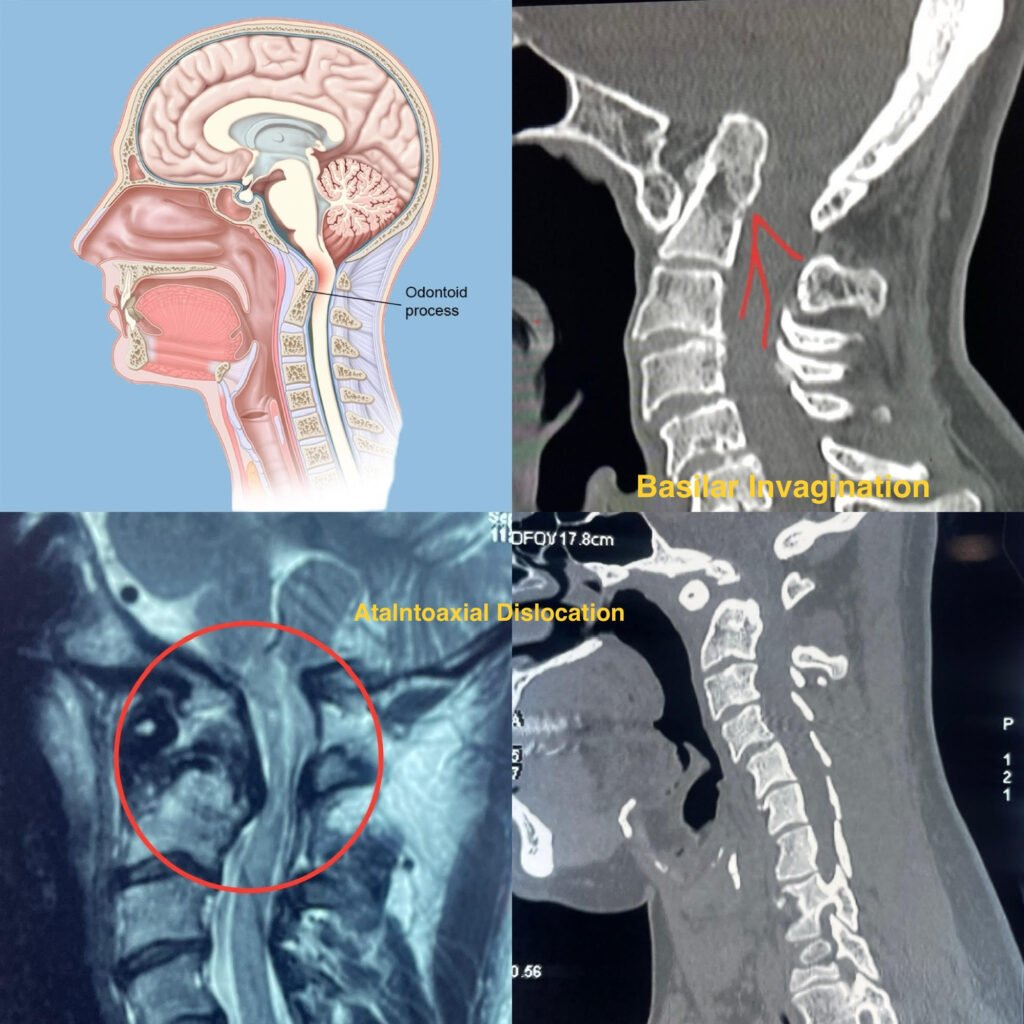Craniovertebral Junction Anomalies

What is CRANIOVERTRABLE JUNCTION ANOMALIES
Craniovertebral Junction Anomalies are abnormalities that affect the connection between the base of the skull (cranium) and the upper part of the spine (vertebrae). These anomalies can involve malformations of the bones, ligaments, or other structures in this region.
Symptoms:
- Symptoms of Craniovertebral Junction Anomalies can vary depending on the specific anomaly and its severity.
- Common symptoms may include neck pain, headaches, difficulty with balance and coordination, weakness or numbness in the limbs, and problems with breathing or swallowing.
Primary Symptoms:
The primary symptoms of Craniovertebral Junction Anomalies may include:
- Severe neck pain, especially with movement.
- Headaches, often at the back of the head or base of the skull.
- Difficulty with fine motor skills, such as writing or buttoning clothes.
- Sensory disturbances, such as tingling or numbness in the arms or legs.
- Problems with balance and coordination, which may lead to frequent falls or clumsiness.
- In severe cases, difficulty with breathing or swallowing due to compression of the spinal cord or brainstem.
Diagnosis/Treatment:
- Diagnosis typically involves a combination of medical history, physical examination, and imaging studies such as X-rays, CT scans, or MRI.
- Treatment options depend on the specific anomaly and its severity but may include observation, physical therapy, pain management, or surgery to correct the anomaly and relieve pressure on the spinal cord or nerves.
What to Expect After Surgery:
- After surgery for Craniovertebral Junction Anomalies, patients can expect relief from symptoms such as neck pain, headaches, and neurological deficits.
- Recovery time varies depending on the complexity of the surgery and the individual patient, but most patients can expect to gradually improve over several weeks to months.
- Physical therapy may be recommended to help restore strength, flexibility, and function in the neck and upper body.
Risks & Complications:
- As with any surgery, there are risks associated with procedures to correct Craniovertebral Junction Anomalies, including infection, bleeding, nerve injury, spinal fluid leakage, and recurrence of symptoms.
However, complications are rare, and the benefits of surgery often outweigh the risks, particularly when conservative treatments have failed to provide relief or when there is a risk of neurological damage without surgical intervention.
Spine Treatments
About Dr. Bharat
Dr Bharat Shinde completed his M.Ch Neurosurgery from the National Institute Of Mental Health And Neurosciences (NIMHANS), Bangalore which is an institute of National importance.
